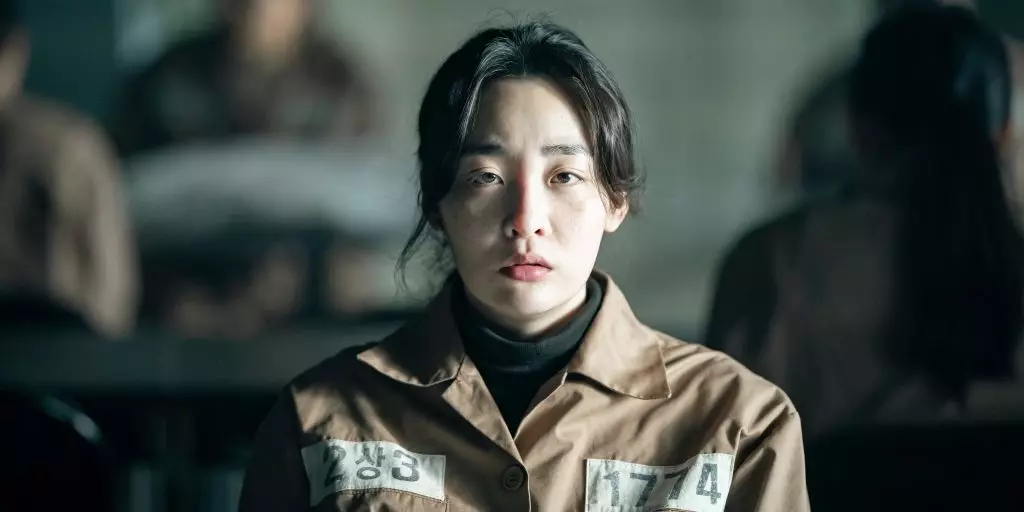Emerging talent Minha Kim marks her return to the spotlight with “A Girl with Closed Eyes,” stepping into a lead role that takes her far beyond her acclaimed performance in AppleTV+’s “Pachinko.” Directed by Chun Sun-young, this feature film makes its premiere at the prestigious Busan International Film Festival, crafted as an intricately woven crime thriller. While the film showcases a compelling storyline and strong character portrayals, it falters due to a series of implausible narrative twists that undermine its initial promise.
The Premise of Intrigue
“A Girl with Closed Eyes” is set against the picturesque backdrop of Hongcheon, South Korea, a region characterized by its serene mountains. The film plunges viewers into a chilling narrative that begins with the shocking discovery of a well-known author, Jeong Sang-woo (Lee Ki-woo), who is found dead, with Kim’s character, Min-ju, standing over the body, gun in hand. The plot thickens as Min-ju claims she is Lee In-seon, a child who was abducted two decades prior and believes that Jeong was behind her kidnapping, a grim inspiration for his bestselling novel.
This initial premise is tantalizing and sets the stage for an exploration of trauma, justice, and complicated friendships. The connection between Min-ju and Park Min-ju (Choi Hee-seo), a police detective who arrives home for a tense reunion, adds depth to the story, suggesting themes of loyalty and the complexities of personal history.
Chun’s film is replete with cinematic references and echoes of classic thrillers. Drawing upon inspirations like Bong Joon-ho’s “Memories of Murder” and Jung Byung-gil’s “Confession of Murder,” the film strives to create a dialogue between urban and rural dynamics in law enforcement. The engagement with literary sources such as Stephen King’s “Misery” and Frances Hodgson Burnett’s “The Secret Garden” further intertwines the cinematic and literary worlds, enriching its narrative fabric.
These references serve as both a foundation and a hindrance, as they set a high bar for originality. The film’s attempt to juggle homage and innovation ultimately complicates its narrative arc, leaving an impression of disjointedness in the execution. While the exploration of varied influences could have fostered a rich context for character development and thematic depth, they often feel more like distractions than cohesive elements.
Though the film establishes a gripping first half, rife with tension and promise, it quickly begins to unravel as it ventures deeper into convoluted plot twists. As new revelations surface and motives are reconsidered, what starts as an engaging narrative spirals into a series of bewildering misdirections. The prospect of high-stakes revelations becomes mired in a fog of red herrings that dilute emotional investment and logical progression.
As the mystery evolves, the once clear motivations of the characters blur, leading to a denouement that leaves audiences perplexed rather than satisfied. The cumulative effect of these narrative missteps detracts from the film’s overall impact, causing it to falter in delivering a cohesive message or resolution.
Despite its narrative flaws, “A Girl with Closed Eyes” boasts remarkable performances that elevate the material. Minha Kim’s embodiment of Lee In-seon showcases her range, oscillating between antagonist and victim with finesse. Her multifaceted portrayal captivates audiences and serves as a poignant reminder of her acting prowess, honed during her time in “Pachinko.”
Choi Hee-seo complements Kim’s performance effectively, bringing depth to her character, whose strained history with Min-ju unfurls throughout the investigation. Together, they craft a dynamic that resonates emotionally, proving that even within a fragile narrative framework, character-driven performances can create powerful moments of connection.
“A Girl with Closed Eyes” emerges as a film full of potential but marred by its erratic plotting. While it undoubtedly reveals the strengths of its lead actors and demonstrates Chun’s ambitious vision, it ultimately struggles to maintain a coherent narrative thread. Observing the ambition woven through the film invites reflection on the broader landscape of crime thrillers and the delicate balance between homage and originality. As viewers, we are left pondering how even the most original concepts can sometimes become ensnared in their own complexities.


Leave a Reply